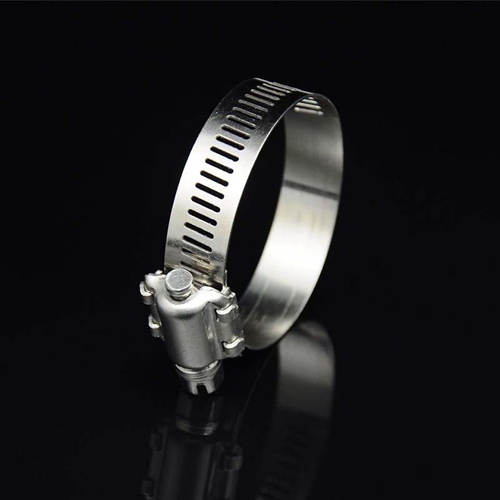- Phone:+86-17331948172 +86-0319-8862898
- E-mail: inquiry@puxingclamp.com
Aug . 13, 2024 22:36 Back to list
High-Quality Fuel Injector Hose Clamps Manufacturers and Suppliers for Automotive Applications
Understanding Fuel Injector Hose Clamps Importance and Manufacturing Insights
Fuel injector hose clamps play a crucial role in the functionality and safety of an engine's fuel delivery system. These clamps are essential components that secure the fuel hoses connected to the fuel injectors, ensuring that there is no leakage and maintaining the integrity of the fuel system. In this article, we will explore the importance of fuel injector hose clamps, the manufacturing process, and what to consider when sourcing these components from factories.
Importance of Fuel Injector Hose Clamps
Fuel injectors are responsible for delivering the precise amount of fuel needed for combustion in an internal combustion engine. The fuel injectors are connected to the fuel lines through hoses which require secure connections to function effectively. Fuel injector hose clamps are designed to maintain this integrity by firmly holding the hoses in place, preventing any slippage or disconnection that could lead to fuel leaks.
A leak in the fuel system can have catastrophic consequences, ranging from poor engine performance to severe safety hazards, such as fires or explosions. Therefore, using high-quality hose clamps is essential for ensuring reliable engine performance and overall vehicle safety. Additionally, proper installation of these clamps can help mitigate wear and tear associated with vibrations and thermal expansion, extending the lifespan of both the hoses and the connectors.
Manufacturing Process of Fuel Injector Hose Clamps
The manufacturing of fuel injector hose clamps typically involves several key steps.
1. Material Selection The primary materials used for hose clamps include stainless steel, aluminum, and various thermoplastics. Stainless steel is often preferred for its corrosion resistance and strength, particularly in high-temperature environments.
2. Design The design phase involves engineering the clamp to ensure that it can effectively hold the hose while allowing for ease of installation and removal. Many clamps feature a screw or mechanism for adjusting the tightness around the hose.
3. Fabrication Once the design is finalized, the manufacturing process begins. This may include cutting, bending, and shaping the material according to the design specifications. Techniques such as stamping and machining are commonly employed to achieve precise dimensions.
fuel injector hose clamps factories

4. Finishing After the clamps are fabricated, they undergo finishing processes that may include surface treatments to enhance corrosion resistance, such as plating or coating. Quality control checks are conducted to ensure that each clamp meets the necessary durability standards.
5. Packaging and Distribution Finally, the completed hose clamps are packaged and sent to distributors or directly to customers, ready to be used in vehicle repairs or manufacturing.
Sourcing Fuel Injector Hose Clamps from Factories
When considering sourcing fuel injector hose clamps from factories, there are several factors to take into account
- Quality Assurance It’s paramount to ensure that the manufacturer adheres to stringent quality control measures. Certificates of compliance with industry standards can provide peace of mind.
- Customization Some applications may require specialized designs or dimensions. Working with a manufacturer that offers customization can ensure that specific needs are met.
- Production Capacity and Lead Times Understanding the factory's production capacity and lead times is essential, especially for businesses that need to maintain inventory levels.
- Cost Considerations While cost is a critical factor, the cheapest option is not always the best. It’s important to balance cost with quality to ensure that the clamps perform reliably over time.
In conclusion, fuel injector hose clamps are indispensable components in ensuring the safe and efficient operation of an engine's fuel system. Understanding their importance, the manufacturing process, and key sourcing considerations can help businesses make informed decisions when selecting these vital components from factories. Prioritizing quality and reliability will ultimately contribute to better engine performance and enhanced safety.
-
Large Stainless Steel Adjustable American Type Hose Clamp - Hebei Pux Alloy Technology Co., Ltd|Corrosion Resistance&High Breaking Torque
NewsJul.30,2025
-
Large Stainless Steel Adjustable American Type Hose Clamp - Hebei Pux Alloy Technology Co., Ltd
NewsJul.30,2025
-
Large Stainless Steel Adjustable American Type Hose Clamp - Hebei Pux Alloy Technology Co., Ltd|Corrosion Resistance&Industrial Applications
NewsJul.30,2025
-
Large Stainless Steel Adjustable American Type Hose Clamp-Hebei Pux Alloy Technology Co., Ltd|Corrosion Resistance, Adjustable Design
NewsJul.30,2025
-
Large Stainless Steel Adjustable American Type Hose Clamp - Hebei Pux Alloy Technology Co., Ltd. | High Breaking Torque & Corrosion Resistance
NewsJul.30,2025
-
Large Stainless Steel Adjustable American Type Hose Clamp - Hebei Pux Alloy Technology Co., Ltd
NewsJul.30,2025




